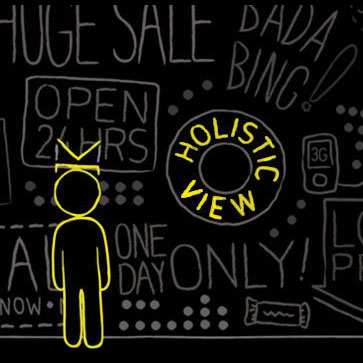Artificial Intelligence: An Advertiser's Best Friend

By Or Shani, CEO and Founder of Adgorithms
Artificial intelligence (AI) tends to conjure up images of HAL in Kubrick's "2001: A Space Odyssey" or, more recently, Samantha in Spike Jonze's "Her."
What was once relegated to the chronicles of science fiction is now a reality for advertisers who want to maximize ad spend ROI.
In basic terms, AI is essentially self-learning technology that automates decision-making based on relevant customer data - just don't expect it to develop a consciousness any time soon. For advertisers, this means that AI can more quickly respond to market dynamics than manual optimization to continually build on what's working and move away from what's not. There is no shortage of opportunities for AI to elevate the strategic value of advertising campaigns, making it an industry mainstay in the immediate future. Here are three reasons to consider AI for your next advertising campaign.
A Hands-Off Approach
While it may seem counterintuitive, it's okay to relinquish control to AI in terms of where ad dollars are spent - in fact, it's encouraged. There are billions of possible combinations an advertiser can choose from to reach a target buyer - from age to gender to geographic location, and so on. This is nearly impossible for any human to resolve. As long as you know what your end goal is, AI will get you there. It does everything an advertiser would do manually, but faster and with less money wasted on testing to find the magic combination.
To drive a successful campaign manually, you need either a massive budget for trial and error, or a large team to dedicate the time and brainpower to analyze and optimize strategy. Even then, there are limitations to what a human being is capable of processing. And even enterprises (with many resources) may miss out on large-scale opportunities. But AI can help level the playing field by providing a cost-effective advertising tool that does this work on its own, with little need for human involvement beyond establishing campaign goals.
Self-Learning Technology
Almost as bad as a poor-performing campaign is a good-performing campaign on a limited scale. This tends to be the natural outcome of manual optimization through process of elimination - you start by casting a wide net, and gradually cut out the elements that aren't working. But while you're left with a highly targeted net, the number of fish you can catch is now limited.
With a good AI system that learns and evolves over time, not only will your campaign net become more targeted, but it will also build on the most effective campaign elements to enable you to catch even more fish and get you to your goals faster. That's because AI scales ad campaigns up, not down - and it won't make the same mistakes for future campaigns. Human error, on the other hand, can result in the same mistakes being made over again - especially by marketers who may not fully grasp the intricacies of advertising and don't understand the root of their mistakes.
Fraud Reduction
Ad fraud has become a serious concern as of late. Studies show that nearly 30 percent of ad impressions are fraudulent. That's a lot of wasted money. AI can significantly reduce ad fraud by using big data analysis to determine what aspects of each campaign result in conversions. It can also apply this same analysis to identify fraudulent patterns or plain bad performance from poor-quality leads. When integrated wisely, AI can not only minimize this activity in real-time, but also put itself on alert for future incidences by learning consumer behavior patterns. By measuring this data over time, AI is continually self-improving, resulting in better campaign performance.
When used effectively, AI is an advertiser's best friend, optimizing campaigns to get them to their end goal quicker, while improving ROI. Through self-learning technology, AI expands the pool of qualified leads, sales and users, significantly reducing the incidence of fraud by evolving over time.









